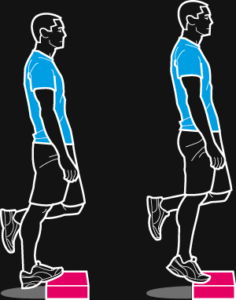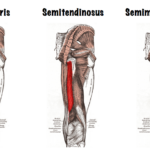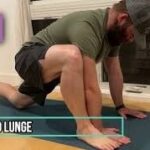![[1]](https://images.squarespace-cdn.com/content/v1/568c1797df40f37b331c4d04/1488289858986-I2Y8966XBHE85V1IQG12/Achilles-tendon-300x196.jpg)
One of the largest and strongest tendons in the body is the Calcaneal tendon, better known as the Achilles tendon. This tendon is responsible for helping you walk to work, run those long runs, and jump with during that HIIT workout. When you stand up on your toes or push off, this is the tendon that allows you to do so. It attaches from your calf muscles (Gastrocnemius and Soleus) to your heel (calcaneal bone) and is one hardworking tendon: when you flex your calf, it pulls on your heel. Overuse, poor self-care leading to tight muscles, poor shoe choices (not enough support, old, too high…), excessive incline workouts, increasing running mileage or the intensity of your workout too quickly are some of the things that can lead to pain and injury to the Achilles tendon. If left untreated, it can turn into what is known as Achilles tendonitis or tendinopathy. Symptoms of this injury are pain, swelling and inflammation in the back of the heel or lower calf; there may also be limited flexibility in the ankle. This can be felt especially in the morning when first walking, but can be present throughout the day with varying degrees of pain and discomfort.
If these symptoms start and don’t dissipate, stop your workouts immediately. Any activity that aggravates your symptoms should be put on hold until this injury subsides. Until you can complete toe raises without pain, don’t resume intense activities. The RICE method is recommended (Rest, Ice, Compression and Elevation) right after the injury occurs. Your doctor will generally recommend Ibuprofen to reduce the pain and inflammation. Splints and or taping can also be beneficial. A visit to the doctor for proper diagnosis is also important.
Once through the initial acute phase, low impact activities such as the elliptical, swimming and biking can help resume activities without being too stressful on the lower leg. Gentle stretching, foam rolling and massage of the calves are great ways to loosen the muscles in the lower legs and reduce the stress on the Achilles tendon.
Some stretches that have been shown to be beneficial are eccentric heel drop, Soleus stretch and Gastrocnemius stretch, shown below.
Eccentric heel drop:
![[2]](https://images.squarespace-cdn.com/content/v1/568c1797df40f37b331c4d04/1488289859284-TF0O8NFK9897JW7TA0DU/Eccentric-heel-drops2-236x300.png)
Stand on the edge of a step and lower yourself slowly and in control (try a slow count of 4 or 5) on your injured foot, essentially exerting force as the muscle extends.
Then use your other, non-injured, foot to raise yourself back up, so as not to stress the tendon in the rising motion.
Do 15 repetitions, twice a day.
![[3]](https://images.squarespace-cdn.com/content/v1/568c1797df40f37b331c4d04/1488289860183-8N3J71HTW0O7Z2SKEHO8/s_soleus-150x150.png)
Soleus stretch
With your knees bent, and the leg that needs to be streched behind gently lean forward while keeping the rear heel down.
Do 15 repetitions, hold each for 15-20 seconds. Repeat twice a day.
Gastrocnemius stretch
![[3]](https://images.squarespace-cdn.com/content/v1/568c1797df40f37b331c4d04/1488289860082-SSB9JRZK3ERYJ5N9GC30/s_gastroc-150x150.png)
With straight legs and the leg that needs to be stretched behind, gently lean forward while keeping the heel down.
Do 15 repetitions, hold for 15-20 seconds each. Repeat twice a day.
If these methods don’t alleviate the problem, your doctor can recommend the next steps. Self-care should be an important part of every person’s routine, especially athletes. With proper self-care of your lower legs, stretching, listening to your body, foam rolling and massage, you can aim to stay healthy and injury free.
Picture references:
- http://strengthrunning.com/2013/03/achilles-tendonitis/
- http://www.runnersworld.co.za/training/cross-training/dont-get-hurt-build-strength/
- http://astepahead.com.au/cooling-down-and-stretching-for-netball/
References (viewed 2/27/17):
- http://www.healthline.com/health/achilles-tendinitis
- http://orthoinfo.aaos.org/topic.cfm?topic=a00147
- http://www.runnersworld.com/achilles-tendinitis
- http://www.sportsinjuryclinic.net/sport-injuries/ankle-achilles-shin-pain/achilles-tendonitis
- http://www.webmd.com/fitness-exercise/picture-of-the-achilles-tendon#1
This article/video is for educational purposes only; do not attempt without your physician’s clearance. If you are in pain or injured, see your physician.
Copyright © Vidal Sports LLC 2018







